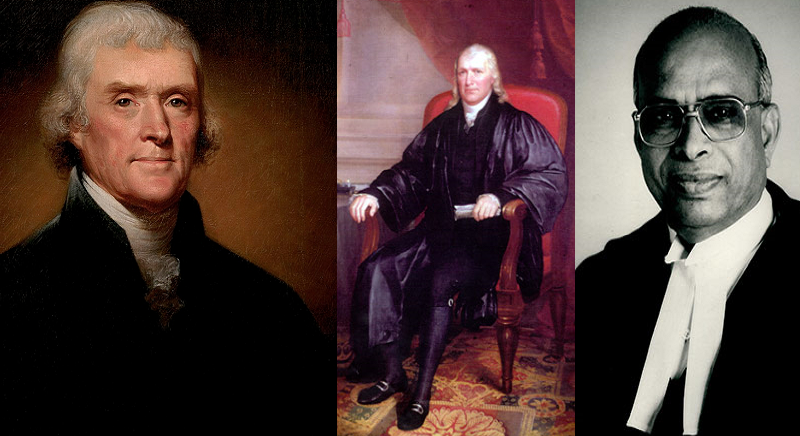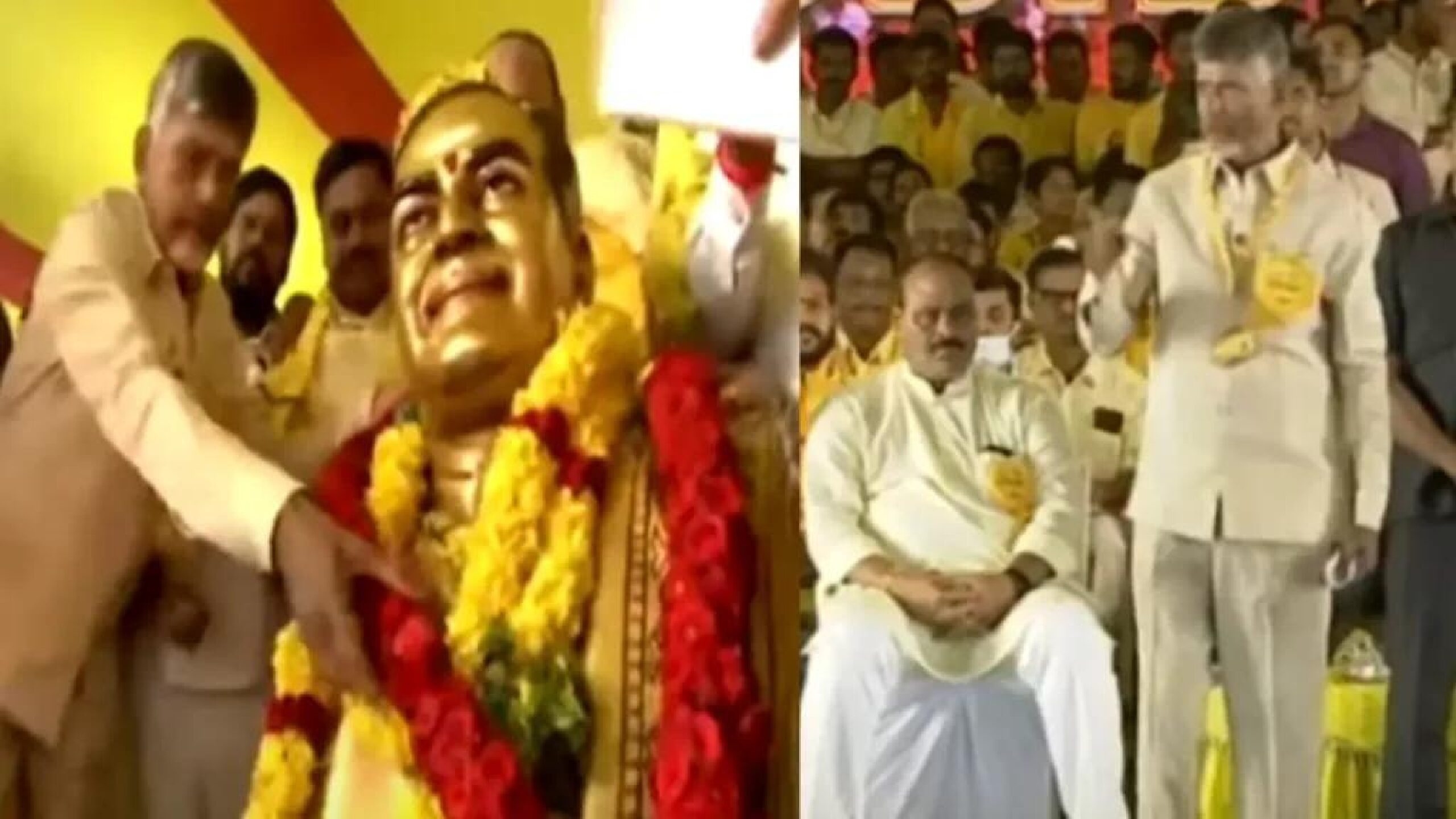No action possible even if judicial misconduct is proved
Prof M Sridhar Acharyulu
Without preliminary inquiry and findings of charges prima facie, there is no possibility of any action, much less the impeachment of any judges in present scenario of AP CM’s allegations of bias and political nexus and undue influence on judges. The question is whether judges are immune from any accountability process also?
Jagan Mohan Reddy in his capacity as Chief Minister of Andhra Pradesh alleged that Justice N V Ramana, of Supreme Court, is influencing the Chief Justice and other judges of AP High Court. He also alleged that proximity between former chief minister and Opposition Leader Chandrababu Naidu and Justice Ramana was the cause of orders of AP High Court against his government’s decisions. Is it possible for Jagan to prove these allegations? It will be surely a herculean task. Suppose he could prove it, what will be the consequence, what action could be contemplated against them?
Interestingly, it is almost impossible to penalize the judges in India, even if the allegations of judicial misconduct are proved. Whether any judge in past was removed on the grounds of judicial misconduct of political nexus, or bias or corruption? There were two attempts in US and India, where, though allegations were proved, impeachment failed. In these two Constitutional democracies the impeachment is a political process, but not just judicial process based on the proof of misconduct.
Failed process of impeachment
The impeachment of a sitting judge of Supreme Court, though not succeeded, explains its process. During 1990s Justice V. Ramaswami, a sitting judge of the Supreme Court alleged to have committed some questionable acts when he was the Chief Justice of Punjab and Haryana High Court. Reports were submitted by (a) the Internal Audit Cell of the High Court, (b) the District and Sessions Judge (Vigilance), besides reports and audit queries from the Accountant General’s Office.
These reports were taken by the then Attorney-General of India, Soli J. Sorabjee, and the president of the Supreme Court Bar Association, K.K. Venugopal, and other leaders of the Bar to the notice of Chief Justice of India Sabyasachi Mukharji. On July 20, 1990, CJI made a statement that was widely published and is part of the Supreme Court record.
After referring to the reports circulating about Justice V. Ramaswami, his statement to the Bar, in open Court contained the following: “This was an unprecedented and an embarrassing situation. It called for caution and establishment of a salutary convention.” … “The Supreme Court must uphold the rule of law. It is, therefore, necessary that those who uphold the rule of law must live by law and judges must, therefore, be obliged to live according to law.” … “We must, therefore, ensure that there is no conduct of the judges which affects the faith of the people that judges live according to law.”
… “I was constrained, in those circumstances, to advise Brother Ramaswami to desist from discharging judicial functions so long as the investigations continued and his name was cleared on this aspect.” … “Since I had assured the learned Attorney General, the Law Minister, the president of the Bar Association and others that I will look into it, I thought I must convey to you the result of my looking into it.”
Then Justice Ramaswami went on leave. On August 29, 1990, CJI Mukharji constituted a Committee of three judges — Justice Ray, Justice Shetty and Justice Venkatachaliah and sought their advice as to whether Justice Ramaswami should sit in Court. The CJI Mukharji died prematurely on September 25, 1990, and Ranganath Misra was appointed CJI on October 6, 1990. The Committee of three judges made its report on November 6, 1990, saying it did not see any ground of moral turpitude which would prevent Justice Ramaswami from discharging his duty as a judge.
The Lok Sabha Speaker, on an impeachment motion, appointed a Committee consisting of Justice P.B. Sawant of the Supreme Court, Justice P.D. Desai, Sitting Chief Justice of Bombay, and O. Chinnappa Reddy, a former judge of the Supreme Court. The Committee in its report gave adverse findings opining that the acts constituted “misbehaviour”. The ruling Congress party abstained from voting and the impeachment motion failed. (196 for the motion, none against, 205 abstentions).In Justice Ramaswami’s impeachment case, the statement made by CJI Mukharji in open court has set a precedent and should be regarded as a healthy convention.
Although the Inquiry Committee had found Justice Ramaswami guilty on 11 out of 14 charges, the impeachment motion failed on account of insufficient votes at the penultimate stage. There were several other attempts to impeach some judges, which did not end up in removal. In 2011, allegations were proved against Judge of Sikkim HC PD Dinakaran, but he resigned at that stage itself. Similarly the corruption charges against Sumitra Sen of Calcutta HC were proved, impeachment process began, but he resigned before the motion was moved in 2011. Allegation of sexual misconduct against SK Gangele of MP High Court were not established by Rajya Sabha committee and thus the process ended there. Similarly, inquiry committee could not find basis for caste bias allegations against Justice C V Nagarjun Reddy of AP & Telangana HC during 2016 and 2017.
Impeachment of US SC Judge
In 1796, President George Washington appointed Chase to the United States Supreme Court. After winning election in 1800, Thomas Jefferson, the President of US, was alarmed at the seizure of power by the judiciary through the claim of exclusive judicial review. He felt that Justice Samuel Chase (April 17, 1741 – June 19, 1811) an Associate Justice of the United States Supreme Court was not objective and was biased in his judicial conduct. Based on his judgments and actions on the court Judge Chase was accused of demonstrating bias. President Jefferson believed and wanted that Justice Chase should be removed from office.
There are eight allegations (in US they call ‘articles’ of impeachment), involving his handling of a trial of a person, trial of political libel cases, allegedly descending from the dignity of a judge, procedural errors in various matters, and his intemperate and inflammatory –peculiarly indecent and unbecoming…highly unwarrantable …highly indecent remarks while ‘charging’ or authorising a Baltimore grand jury. On March 12, 1804, the House voted 73 to 32 to impeach Chase on finding him guilty of all eight articles of impeachment, all centering on alleged political bias.
But the Senate voted differently. It has acquitted Chase on all counts, and Chase served on the Supreme Court until his death in 1811 (see webpage: Samuel Chase – The Samuel Chase Impeachment Trial, and Samuel Chase”. The Supreme Court Historical Society. Archived from the original on July 13, 2007, Richard Ellis, “The Impeachment of Samuel Chase,” in American Political Trials, ed. by Michael R. Belknap (1994) pp. 57–76, quote on p. 64.).
Judges do not retire in US
Justice Chase incident shows that how it was possible in American democracy to initiate action against judges on allegations of bias and at the same time how the independence of judiciary was strengthened when Chase was voted not guilty by senate, leading to his continuation in office for rest of his life. In United States the judges continue in office till death. Absence of retirement before death is considered as one of the important factors of judicial independence. Once appointed, a judge cannot be removed by Executive unless entire parliament decides to impeach him.
Keith E. Whittington, wrote in his “Reconstructing the Federal Judiciary: The Chase Impeachment and the Constitution,” Studies in American Political Development 1995 v9#1: 55–116, that this impeachment has raised several constitutional questions over the nature of the judiciary. He felt that it was the end of a series of efforts to define the appropriate extent of judicial independence under the Constitution. But he felt that: “It set the limits of the impeachment power, fixed the concept that the judiciary was prohibited from engaging in partisan politics…”.
Retirement: a relief
In India, our Constitutional founders prescribed 65 as age of retirement for SC judges and provided for process of impeachment. Some considered prescription of 65 is a great reformative measure, but others criticised that the retiring judge will be looking for post-retirement allurements offered by executive and hence it adversely affects the independence and objectivity of judicial decisions.
This incident of failed impeachment of US Supreme Court is quoted here not to compare with happenings in our country or any state but to tell the people that there is a mechanism to deal with allegations of bias, along with enough precautions to secure independence of Supreme Court judge in USA.
Judicial Investigative committee
There is a mechanism in United States to have a judicial investigative committee, which will act as a panel of judges, who are specifically selected to investigate alleged judicial misconduct complaint against a judge against whom an accusation of judicial misconduct is made. But, these Judicial investigative committees are rarely appointed. According to U.S. Court statistics, only 18 of the 1,484 judicial misconduct complaints filed in the United States Courts between September 2004 and September 2007 resulted in the formation of judicial investigative committees. Not every complaint will be taken up for consideration and the judiciary may find no need to form such committee.
In the UK, there is a Judicial Conduct Investigations Officer to investigate into the allegations of judicial misconduct.
Advice from A Senior Advocate
On situations of judicial misconduct and invoking provisions of impeachment, Senior Advocate of Supreme Court Anil Divan said “… surely the precedent by which Justice Mukharji requested Justice V. Ramaswami to go on leave is worthy of emulation. Secondly, the way forward would be to take the public, the legal fraternity and the media into confidence by regular official releases or press statements issued under the authority of the Supreme Court collegiums. Thirdly, before the snowball turns into an avalanche, it is important to know whether his appointment is going forward or not.
Anil Divan recalled the wise words used by the three Judges Committee in the Ramaswami case: “A judge’s morals are not the standards of the marketplace but are the “punctilio” of a higher code…. “There has, indeed, been a growing sense of cynicism and concern in public mind about the fall in the standards of judicial conduct and of the wisdom of such constitutional immunity for judicial improprieties from public scrutiny and censure.(https://www.thehindu.com/opinion/lead/Judicial-integrity-Lessons-from-the-past/article16887900.ece)
What he wrote on 20 October 2009 is quite relevant: “Today, the incantation of maxims of high judicial morality has few takers; acceptable precept is acceptable example alone. Sunlight is, perhaps, the best disinfectant.”
Unless there is complete transparency and strong internal mechanism to ensure ethical standards of objectivity, justice remains an illusion.





Even after 70 years of independence,no punishment if corruption charges proved.. except request to go or impeachment. is Pc act not applicable to all citizens or any exemption to certain class at the cost public in case of corruption. Certinly there should b . A process in place equality before law and constitution. Then only public confidence.